Physical Address
304 North Cardinal St.
Dorchester Center, MA 02124
Physical Address
304 North Cardinal St.
Dorchester Center, MA 02124
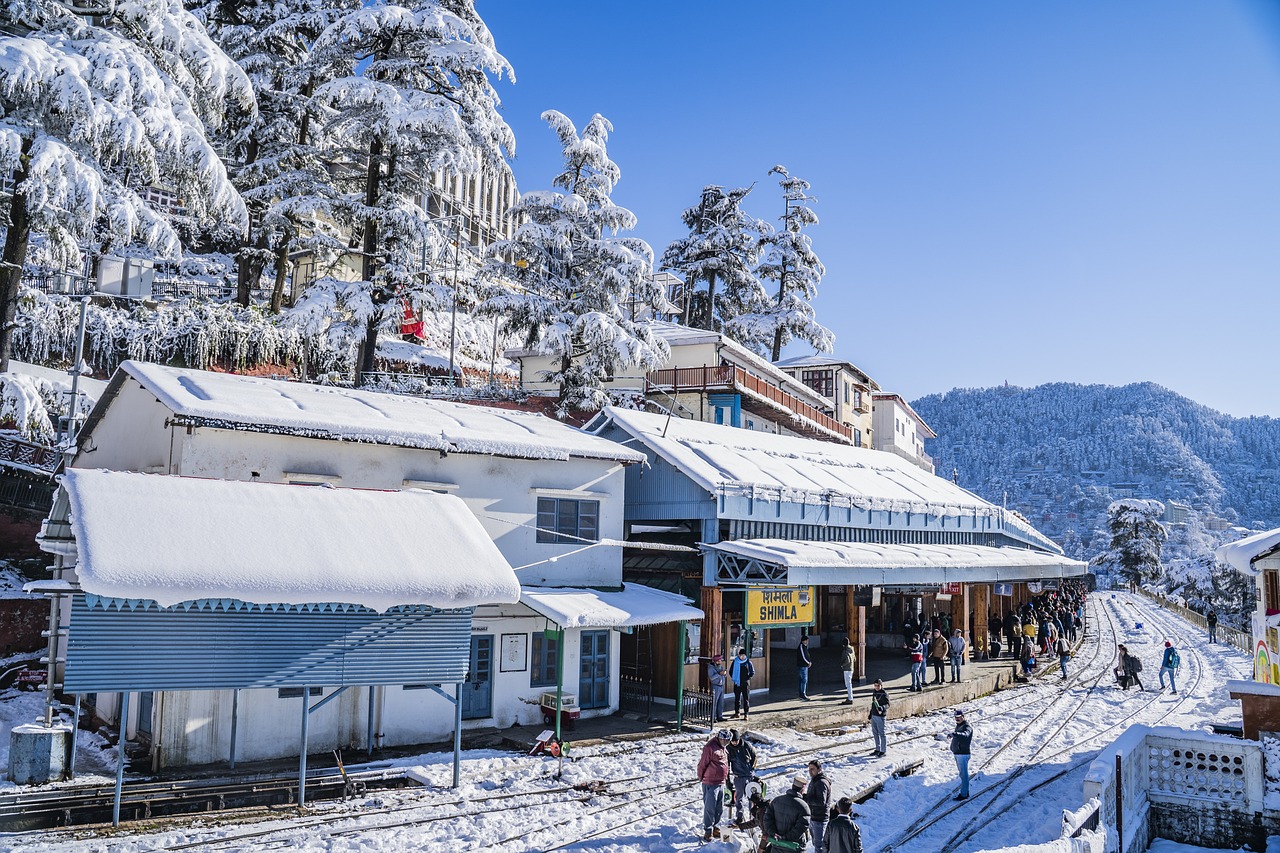
India, a land of diverse cultures, rich heritage, and breathtaking landscapes, attracts millions of tourists from around the globe every year. From ancient historical sites to vibrant cities, from serene backwaters to majestic mountains, India offers a myriad of travel experiences. In this blog, we will embark on a journey to discover the top 10 famous tourist places in India that should be on every traveler’s bucket list.

Agra not only captivates visitors with its architectural marvels but also entices them with its diverse cuisine and vibrant culture. Exploring the flavors of Agra’s food scene and immersing yourself in its cultural heritage will enhance your overall experience of this enchanting city.Petha: Agra is famous for its sweet delicacy known as Petha. Made from ash gourd (winter melon), it is available in various flavors like plain, kesar (saffron), angoori (grape-shaped), and more. Petha makes for a perfect souvenir to take back home. Mughlai Cuisine: Agra, being an integral part of the Mughal Empire, has inherited its culinary traditions. Indulge in mouthwatering Mughlai dishes like biryani, kebabs (such as seekh kebab and boti kebab), and rich curries like butter chicken and chicken tikka masala.Bedai and Jalebi: A popular breakfast in Agra, Bedai is a deep-fried bread made from We begin our exploration with the iconic Taj Mahal, a UNESCO World Heritage site and one of the Seven Wonders of the World. Mughal Architecture: Agra is renowned for its magnificent Mughal architecture, with the Taj Mahal being the epitome of this grandeur. The intricate designs, use of white marble, and symmetrical layouts are characteristic of Mughal architecture. The Agra Fort and Itmad-ud-Daulah’s Tomb are other architectural gems worth exploring. Performing Arts: Agra is a hub of traditional performing arts. The city has a vibrant classical music and dance scene, with performances of Hindustani classical music and Kathak dance being popular. You can attend cultural events and music concerts to experience the rich artistic heritage of Agra. This architectural masterpiece, built by Mughal Emperor Shah Jahan, is a symbol of eternal love. Its pristine white marble structure, intricate carvings, and stunning symmetry make it a must-visit destination.
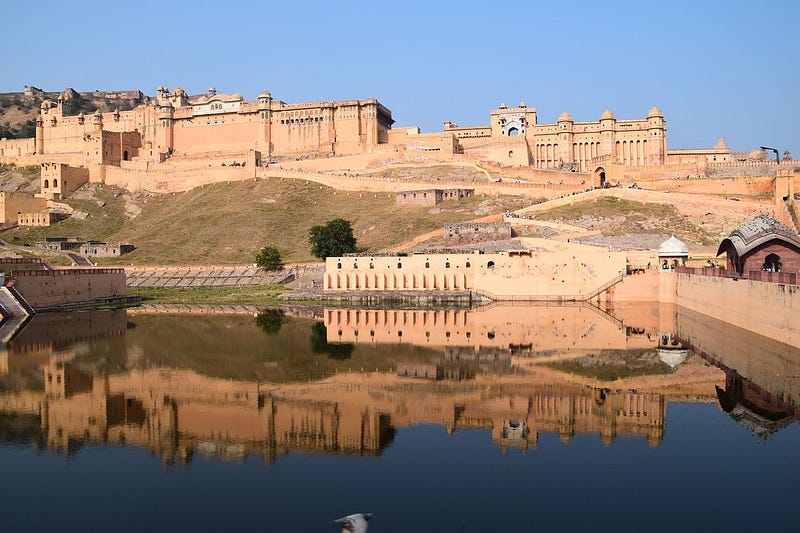
Jaipur, also known as the “Pink City,” is the capital of Rajasthan and a city rich in history and imperial magnificence. Its magnificent palaces, including the Hawa Mahal and the City Palace, reflect the opulence of the Rajput era. The majestic Amer Fort, located on a hilltop, offers breathtaking panoramic views of the city. The city is famous for its stunning architectural marvels, The streets of Jaipur are adorned with pink buildings, a unique characteristic that sets it apart. Exploring the bustling markets of Jaipur, such as Johari Bazaar and Bapu Bazaar, offers a delightful experience with vibrant textiles, handicrafts, and gemstones on display. The city’s cuisine is a treat for food enthusiasts, with its mouthwatering flavors of Dal Bati Churma, Laal Maas, and Pyaaz Kachori. Jaipur also celebrates its cultural heritage through colorful festivals, lively folk music, and captivating dance performances. The city’s bustling streets, adorned with camels and elephants, transport visitors to a bygone era of royal grandeur. Whether it’s admiring the intricate architecture, immersing oneself in the local culture, or indulging in the city’s culinary delights, Jaipur offers an enchanting experience that leaves a lasting impression.
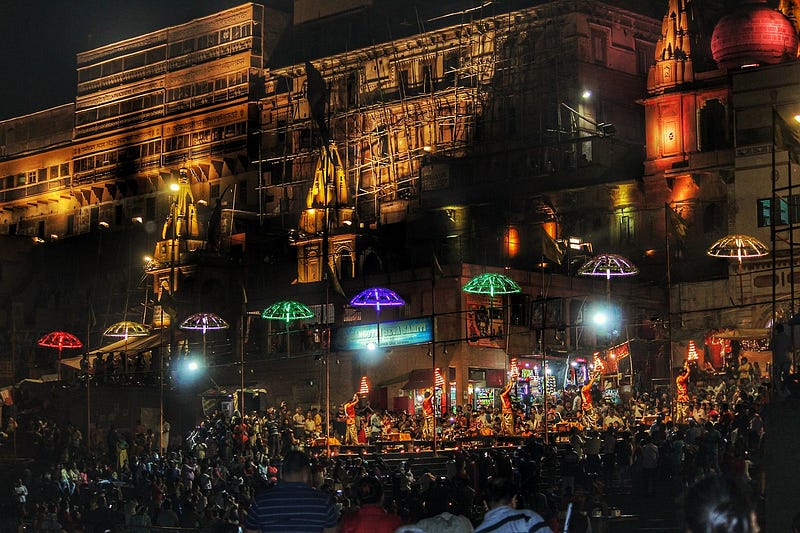
Varanasi, one of the oldest continuously inhabited cities in the world, is a spiritual hub of India. Located on the banks of the sacred Ganges River, it is considered the holiest city for Hindus. The ghats (steps) along the river witness daily rituals, including the mesmerizing Ganga Aarti ceremony, where devotees offer prayers and light oil lamps.
Varanasi, also known as Kashi or Banaras, is a city in the Indian state of Uttar Pradesh located on the banks of the sacred Ganges River. Considered one of the oldest continuously inhabited cities in the world, Varanasi is a spiritual and cultural hub of India. The city holds immense religious significance for Hindus and is believed to be the abode of Lord Shiva.
Varanasi is known for its ancient temples, mesmerizing Ganga Aarti ceremonies, and spiritual rituals. The ghats (steps) along the riverbank are the focal point of spiritual activities, where pilgrims and devotees gather to perform sacred rituals and immerse themselves in the purifying waters of the Ganges. The Ganga Aarti, held every evening, is a spectacular sight as priests perform a ritual of worship with oil lamps, incense, and devotional chants, creating a divine ambiance that leaves visitors spellbound.
The city is home to numerous temples, each with its unique architecture and religious significance. The Kashi Vishwanath Temple, dedicated to Lord Shiva, is the most revered and draws devotees from all over the world. Other notable temples include the Sankat Mochan Hanuman Temple, Tulsi Manas Temple, and the Durga Temple.
Varanasi is also known for its renowned educational institutions, particularly in the field of music, dance, and philosophy. The city has been a center for classical music, especially the Benares gharana, and is frequented by musicians and scholars seeking to deepen their understanding of Indian classical arts.
Exploring the narrow lanes of Varanasi’s old city, known as the “galis,” is an experience in itself. The vibrant markets, bustling with activity, offer a treasure trove of silk sarees, handicrafts, and intricate brassware. The local cuisine of Varanasi, with its flavorsome street food like kachori, chaat, and lassi, tantalizes the taste buds and provides a delightful culinary experience.
Varanasi is a city that showcases the cycle of life and death. The Manikarnika and Harishchandra ghats are known as the primary cremation sites, where the mortal remains of the departed are cremated in accordance with Hindu customs. Witnessing these rituals can be an intense and thought-provoking experience, allowing visitors to reflect on the impermanence of life and the spiritual beliefs that underpin Hindu culture.
In conclusion, Varanasi is a city of deep spirituality, where ancient traditions and rituals have been preserved for centuries. It offers a glimpse into the heart and soul of India, where spirituality, devotion, and cultural richness come together in a profound and captivating way. A visit to Varanasi is a transformative experience, leaving a lasting imprint on the hearts and minds of those who seek spiritual enlightenment and cultural immersion.
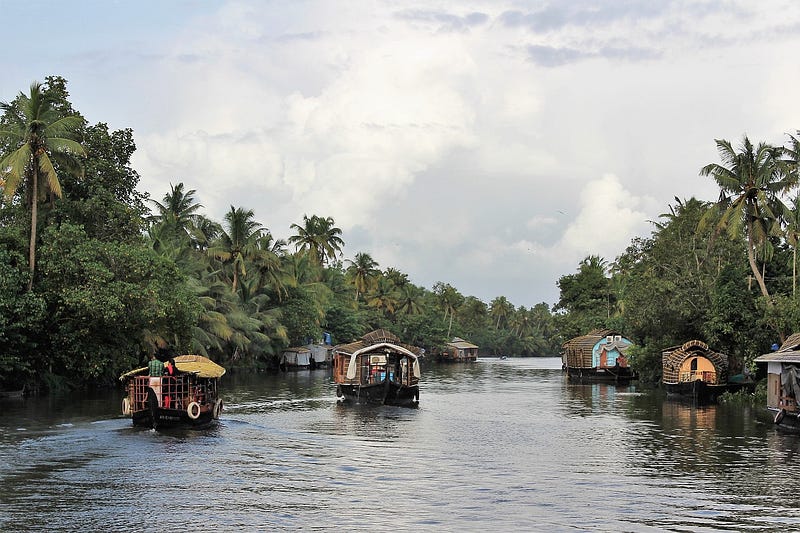
Moving to the southern part of India, we encounter the picturesque backwaters of Kerala. A network of serene lagoons, canals, and lakes, the backwaters offer a unique experience of cruising on traditional houseboats called “kettuvallams.” The lush greenery, coconut groves, and glimpses of rural life make it a tranquil escape. Kerala, often referred to as “God’s Own Country,” is famous for its serene backwaters that meander through the lush green landscapes. The Kerala backwaters are a network of interconnected canals, lagoons, and lakes, stretching along the Arabian Sea coast. This picturesque region offers a unique and tranquil experience that is a highlight of any visit to Kerala.
Cruising on a traditional houseboat, locally known as “kettuvallam,” is the most popular way to explore the backwaters. These houseboats, made from natural materials like bamboo and coir, offer a charming and comfortable accommodation option. Drifting along the calm waters, surrounded by swaying coconut trees and vibrant vegetation, is a truly mesmerizing experience.
As you glide through the backwaters, you will witness the rural life of Kerala up close. Villages and small towns dot the banks, where you can catch glimpses of local communities engaged in fishing, farming, and coir-making. You might even spot traditional wooden canoes gracefully navigating the waterways, carrying locals on their daily routines.
The backwaters also provide an opportunity to observe a variety of flora and fauna. The waters are home to numerous species of fish, turtles, and birds, making it a paradise for birdwatchers and nature enthusiasts. Keep an eye out for colorful kingfishers, majestic herons, and playful otters as you explore the tranquil waterways.
During your backwater cruise, you can savor the delicious flavors of Kerala’s cuisine. Traditional Kerala meals served on banana leaves, include an array of seafood delicacies, coconut-based curries, and fragrant rice. You can also request the crew of your houseboat to prepare freshly caught fish or shrimp, ensuring a truly authentic culinary experience.
The backwaters of Kerala are not just about relaxation and scenic beauty; they also offer opportunities for cultural exploration. You can visit local villages and interact with the warm and welcoming locals, gaining insights into their way of life, traditions, and art forms. Traditional performances like Kathakali dance and Kalaripayattu martial arts are often showcased for visitors, adding to the cultural immersion.
For those seeking rejuvenation and wellness, many resorts and Ayurvedic centers are nestled in the backwater regions. Ayurveda, an ancient Indian system of medicine, offers various rejuvenation therapies and treatments that help balance the body, mind, and spirit.
In conclusion, the backwaters of Kerala provide a serene and captivating escape from the hustle and bustle of everyday life. Whether you choose to cruise on a houseboat, indulge in local delicacies, or immerse yourself in the local culture, the Kerala backwaters offer a truly enchanting experience that will leave you with lasting memories of tranquility and natural beauty.

Famous for its pristine beaches, vibrant nightlife, and Portuguese-influenced architecture, Goa is a paradise for beach lovers. From popular stretches like Baga and Calangute to serene getaways like Palolem and Agonda, there is a beach for every mood. The blend of Indian and Western cultures, evident in its cuisine and festivals, adds to its charm. Goa, a coastal state located on the western coast of India, is a paradise for beach lovers and a popular tourist destination. Known for its pristine beaches, vibrant nightlife, and unique blend of Indian and Portuguese cultures, Goa offers a diverse range of experiences for travelers.
With over 100 kilometers of stunning coastline, Goa boasts numerous beaches that cater to different preferences. There is a beach for every mood, from the busy and crowded beaches of Baga and Calangute to the calm and gorgeous beaches of Palolem and Agonda. Whether you want to relax under the sun, indulge in water sports, or simply take long walks along the sandy shores, Goa’s beaches offer a perfect escape.
Beyond the beaches, Goa is dotted with charming villages and towns that showcase its rich history and cultural heritage. The influence of Portuguese colonization is evident in architecture, cuisine, and festivals. The old quarters of Panaji, the state capital, and the UNESCO-listed Fontainhas neighborhood in the city of Margao are worth exploring for their colorful Portuguese-style houses and narrow winding streets.
One of the highlights of visiting Goa is experiencing its vibrant nightlife. The state is renowned for its beach shacks, nightclubs, and beachside parties that come alive after the sun sets. Popular nightlife hubs like Tito’s Lane in Baga and the beachside clubs of Anjuna and Vagator offer a lively atmosphere with music, dancing, and a range of entertainment options.
Goa’s cuisine is a delightful fusion of flavors from different cultures. Seafood is a staple in Goan cuisine, with dishes like fish curry, prawn balchão, and crab xacuti being must-tries. Goan cuisine also incorporates a variety of spices, coconut, and tangy flavors. Be sure to sample the local specialty, feni, a spirit made from cashew or coconut, during your visit.
Goa is not just about beaches and parties; it also has a rich spiritual and wellness side. The state is home to numerous yoga and meditation retreats, where visitors can rejuvenate their minds, body, and soul in tranquil surroundings. Additionally, Goa has several magnificent temples and churches, such as the famous Basilica of Bom Jesus, which houses the remains of St. Francis Xavier.
Goa provides the ideal combination of sun, sand, culture, and adventure. Whether you seek relaxation on the beaches, thrilling water sports, vibrant nightlife, or a glimpse into its unique cultural heritage, Goa has something for everyone. Its laid-back vibe, picturesque landscapes, and warm hospitality make it a destination that captivates visitors and keeps them coming back for more.
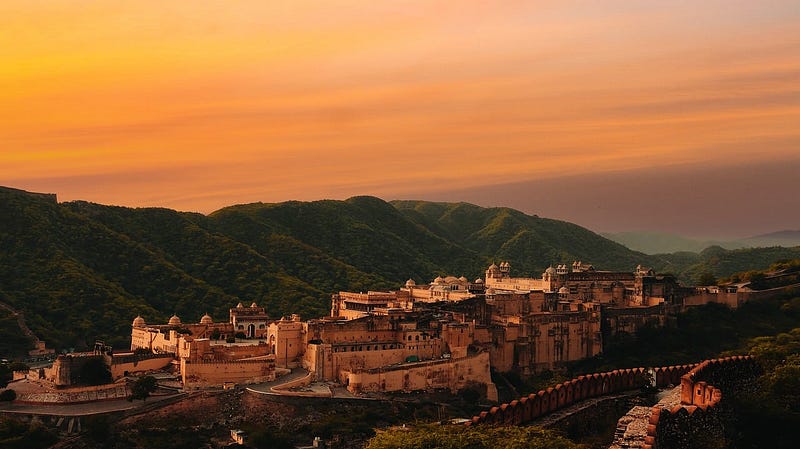
Jaisalmer, often known as the “Golden City,” is a captivating location in Rajasthan, India, located in the midst of the Thar Desert. Renowned for its majestic sand dunes, ancient havelis (mansions), and the imposing Jaisalmer Fort, the city offers a unique and enchanting experience.
At the center of Jaisalmer lies the magnificent Jaisalmer Fort, also known as Sonar Qila or the Golden Fort. This UNESCO World Heritage Site is one of the few living forts in the world, as it is home to a vibrant community of residents. Inside the fort’s walls, you can wander through narrow lanes, marvel at intricately carved Jain temples, and soak in the historical ambiance.
Jaisalmer’s havelis are architectural wonders that showcase the city’s grandeur and opulence. Patwon Ki Haveli, Nathmal Ki Haveli, and Salim Singh Ki Haveli are among the most notable havelis in Jaisalmer. Adorned with exquisite carvings, delicate balconies, and ornate facades, these havelis provide a glimpse into the rich heritage and lifestyle of the bygone era.
One of the highlights of visiting Jaisalmer is experiencing a camel safari in the Thar Desert. Riding on the back of a camel, you can venture into the vast, undulating sand dunes, where the golden hues of the desert come alive during sunrise and sunset. Camping amidst the dunes, enjoying traditional Rajasthani music and dance, and stargazing under the clear desert sky are unforgettable experiences that immerse you in the magic of the desert.
The city’s bustling markets, particularly the Sadar Bazaar and Manak Chowk, offer a delightful shopping experience. You can browse through shops selling intricately embroidered textiles, handicrafts, traditional Rajasthani jewelry, and leather goods. The vibrant colors and craftsmanship of these local products make for wonderful souvenirs.
Jaisalmer also celebrates its vibrant culture through various festivals. The Jaisalmer Desert Festival, held annually in February, is a three-day extravaganza showcasing the cultural heritage of the region. The festival features folk music and dance performances, camel races, turban tying competitions, and showcases the unique traditions of the desert people.
The culinary delights of Jaisalmer are also worth savoring. The local cuisine offers a mix of Rajasthani and Marwari flavors. Indulge in traditional dishes like dal baati churma (lentils, wheat balls, and sweet crumble), gatte ki sabzi (gram flour dumplings in a spicy curry), and ker sangri (a tangy desert bean preparation). Don’t miss trying the delectable sweets like ghotua and panchdhari laddu, which are unique to the region.
In conclusion, Jaisalmer is a captivating destination that takes you back in time to an era of royalty and grandeur. The city’s golden fort, magnificent havelis, desert adventures, vibrant markets, cultural festivals, and delicious cuisine all contribute to an unforgettable experience. A visit to Jaisalmer is like stepping into a fairy tale set amidst the golden sands of the Thar Desert, leaving you with memories that will be cherished for a lifetime.

In the southern state of Karnataka, lies the city of Mysore, known for its regal heritage and opulent palaces. The Mysore Palace, a splendid example of Indo-Saracenic architecture, is a major attraction. During the festival of Dasara, the palace is beautifully illuminated, creating a magical ambiance. Mysore, located in the southern Indian state of Karnataka, is a city that exudes grandeur, history, and rich cultural heritage. Known as the “City of Palaces” and the cultural capital of Karnataka, Mysore offers a captivating blend of architectural marvels, traditional arts, and a regal ambiance.
The most iconic landmark in Mysore is the magnificent Mysore Palace, also known as the Amba Vilas Palace. This opulent palace, built in Indo-Saracenic style, is a visual delight with its intricate craftsmanship, domes, arches, and vibrant colors. The palace is a symbol of the Wodeyar dynasty, which ruled the region for centuries. Visitors can explore the elaborately decorated halls, majestic courtyards, and the royal Durbar Hall, all of which reflect the royal grandeur of bygone eras.
Apart from the palace, Mysore offers a wealth of architectural wonders. The Chamundeshwari Temple, perched on the Chamundi Hills, is a revered shrine dedicated to the goddess Chamundeshwari. Its elaborate gopuram (tower) and panoramic views of the city make it a popular pilgrimage site. The St. Philomena’s Cathedral, with its Gothic-style architecture, is another notable landmark that attracts visitors.
Mysore is deeply rooted in its traditions and art forms. The city is famous for its silk sarees, known as Mysore silk, which are renowned for their vibrant colors and intricate zari work. The Devaraja Market, a bustling market in the heart of the city, is a haven for shoppers looking for silk products, sandalwood carvings, and traditional handicrafts.
Cultural festivals are an integral part of Mysore’s identity. The most famous of these is the Mysore Dasara, a ten-day extravaganza held during Navaratri, celebrating the victory of good over evil. The spectacular parade in which the idol of the goddess Chamundeshwari is carried atop an elephant in a golden howdah is the centerpiece of the celebration. The city is adorned with elaborate decorations, illuminated palaces, and cultural performances, making it a magical time to visit.
Mysore also has a rich tradition of classical music and dance. The city hosts the prestigious Mysore Dasara Classical Music and Dance Festival, featuring renowned artists from across the country. The festival showcases a range of Indian classical dance forms like Bharatanatyam, Kathak, and Kuchipudi, along with classical music concerts.
Culinary delights await food enthusiasts in Mysore as well. The city is known for its unique culinary offerings, including the aromatic Mysore masala dosa, Mysore Pak (a sweet made from ghee, sugar, and gram flour), and Mysore filter coffee, which is brewed in a traditional filter and served with a distinct flavor.
In conclusion, Mysore is a city that seamlessly blends its royal heritage, architectural wonders, cultural festivities, and culinary delights. Its palaces, temples, markets, and artistic traditions create a tapestry of experiences that immerse visitors in the rich tapestry of Mysore’s history and culture. A visit to Mysore is like stepping into a regal era, where grandeur and tradition come together in a truly captivating way.
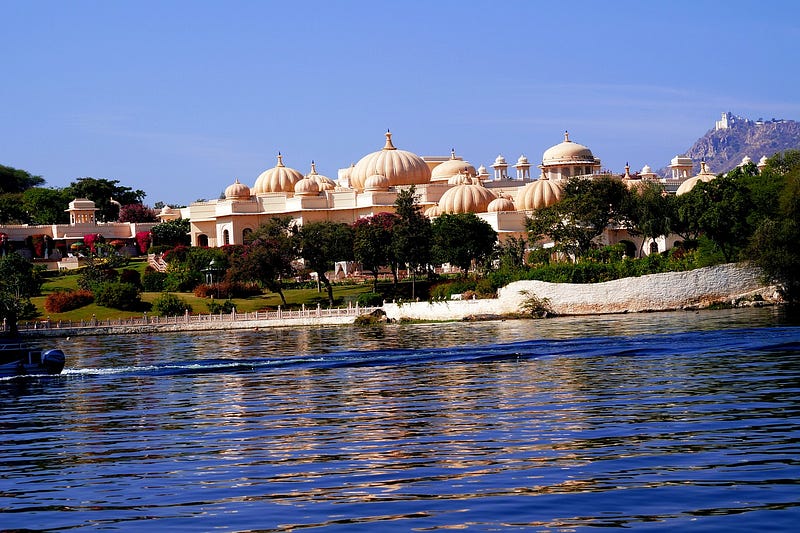
Udaipur, often called the “City of Lakes” or the “Venice of the East,” is a breathtaking destination located in the state of Rajasthan, India. Udaipur, nestled among the Aravalli hills, is famous for its enchanting lakes, majestic palaces, and romantic ambiance.
The centerpiece of Udaipur is the mesmerizing Lake Pichola, an artificial lake surrounded by beautiful hills, palaces, and ghats (steps) that line its shores. The lake is dotted with picturesque islands, including the famous Jag Mandir and Lake Palace, which add to the ethereal charm of the city. Boating on Lake Pichola provides an unforgettable experience, allowing visitors to admire the stunning views of the surrounding landscape and the grandeur of the palaces reflected in the calm waters.
Udaipur is home to several magnificent palaces that transport visitors to an era of regal splendor. The City Palace, a complex of palaces built over centuries, stands majestically on the eastern bank of Lake Pichola. With its stunning architecture, intricate carvings, and panoramic views of the city, the City Palace is a testament to the opulence and artistic brilliance of the Mewar dynasty.
Another architectural gem in Udaipur is the Lake Palace, also known as the Jag Niwas. Situated on an island in Lake Pichola, this palatial hotel appears to float on the water, exuding a sense of serenity and luxury. The palace’s stunning white marble facade, lush gardens, and exquisite interiors make it a must-visit attraction.
Udaipur’s charm extends beyond its lakes and palaces. The city is famous for its intricate miniature paintings, which depict historical events, royal life, and local folklore. Visitors can witness the art form come to life at the Udaipur School of Art, where skilled artisans continue to preserve and promote this traditional craft.
Udaipur’s cultural heritage is celebrated through vibrant festivals and fairs. The Mewar Festival, held annually, showcases the region’s rich traditions and customs through folk music and dance performances, processions, and cultural exhibitions. The Shilpgram Crafts Fair, held in December, is a celebration of rural arts, crafts, and cultural diversity.
The culinary scene in Udaipur offers a delightful blend of Rajasthani flavors and international cuisines. From traditional Rajasthani thalis (platters) to delectable street food like kachoris and mirchi vadas, Udaipur caters to every palate. Rooftop restaurants and lakeside cafes provide stunning views while enjoying a meal, adding to the overall dining experience.
In conclusion, Udaipur captivates visitors with its ethereal lakes, majestic palaces, rich cultural heritage, and romantic ambiance. Its royal architecture, scenic beauty, and warm hospitality make it a dream destination for couples, history enthusiasts, and nature lovers alike. A visit to Udaipur is a journey into a world of grandeur, where the allure of the past blends seamlessly with the beauty of the present.

For adventure enthusiasts and nature lovers, the Leh-Ladakh region offers a breathtaking experience. Surrounded by snow-capped mountains, serene lakes, and monasteries, Leh-Ladakh is a paradise for trekking, motorcycling, and exploring the unique Tibetan-Buddhist culture. Leh-Ladakh, located in the northernmost region of India’s Jammu and Kashmir state, is a captivating destination that offers breathtaking landscapes, adventurous experiences, and a rich cultural heritage. Known for its pristine lakes, snow-capped mountains, and ancient monasteries, Leh-Ladakh attracts travelers seeking both natural beauty and spiritual serenity.
The rugged terrain of Leh-Ladakh is dominated by the majestic Himalayas, making it a paradise for adventure enthusiasts. Trekking in the Himalayas is a popular activity, with trails ranging from easy to challenging, offering stunning views of snow-capped peaks, serene valleys, and high-altitude lakes. The Markha Valley Trek and the Chadar Trek are among the most renowned treks in the region.
The region is dotted with stunning lakes that add to its charm. Pangong Tso, located at an altitude of over 4,000 meters, is a mesmerizing lake known for its ever-changing colors. Surrounded by towering mountains, the lake’s crystal-clear waters create a surreal spectacle. Tso Moriri and Tso Kar are other picturesque lakes that captivate visitors with their tranquility and natural beauty.
Leh-Ladakh is also home to ancient Buddhist monasteries that offer a glimpse into the region’s spiritual heritage. Hemis Monastery, Thiksey Monastery, and Diskit Monastery are among the notable monastic complexes. These monasteries are adorned with colorful prayer flags, intricate murals, and impressive statues of Buddhist deities. Visitors can witness the prayer ceremonies and immerse themselves in the peaceful ambiance.
The cultural diversity of Leh-Ladakh is evident in its traditional festivals and vibrant local markets. The Hemis Festival, held annually at Hemis Monastery, is a grand celebration of music, dance, and religious rituals. The Leh Market and Tibetan Market are bustling hubs where travelers can explore local handicrafts, colorful textiles, and Tibetan artifacts.
The cuisine of Leh-Ladakh reflects its high-altitude geography and Tibetan influence. Traditional Ladakhi dishes like Thukpa (noodle soup), Momos (steamed dumplings), and Sku (a hearty stew) are popular among locals and visitors alike. The region is also known for its butter tea, a unique beverage made with butter, salt, and tea leaves, providing warmth and nourishment in the cold climate.
Visiting Leh-Ladakh offers an opportunity to disconnect from the outside world and immerse oneself in the raw beauty of nature. The stark landscapes, pristine lakes, ancient monasteries, and warm hospitality of the local people create an unforgettable experience that stays with travelers long after their visit.
In conclusion, Leh-Ladakh is a land of awe-inspiring beauty, adventurous trails, and a rich cultural heritage. Its majestic mountains, serene lakes, and spiritual sanctuaries make it a destination that captivates the soul. Whether trekking through the Himalayas, exploring ancient monasteries, or simply soaking in the breathtaking vistas, Leh-Ladakh offers a truly transformative journey into nature’s grandeur and inner peace.
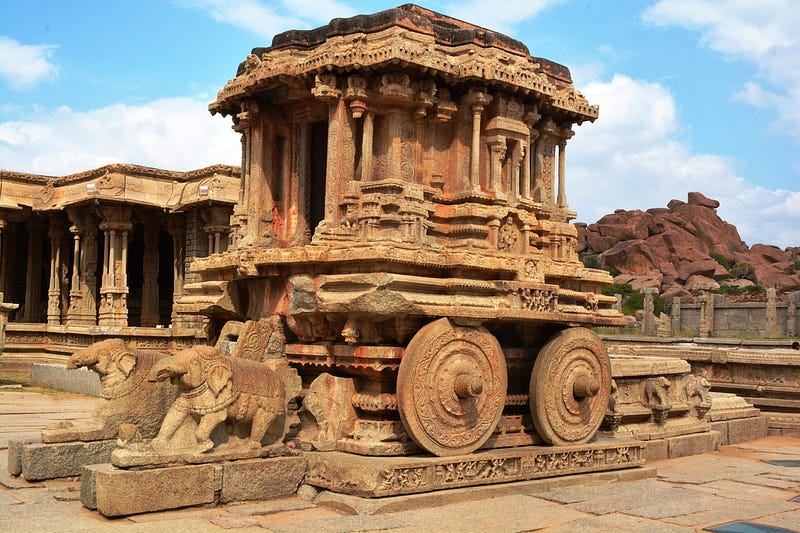
Hampi, located in the southern state of Karnataka, India, is a UNESCO World Heritage Site and a captivating destination that takes travelers on a journey back in time. Once the glorious capital of the Vijayanagara Empire, Hampi now stands as a testament to its rich history, architectural grandeur, and cultural significance.
The ruins of Hampi span over 4,000 acres and showcase the remnants of a once-thriving empire. The iconic Virupaksha Temple, dedicated to Lord Shiva, is a major attraction. This ancient temple, with its towering gopuram (gateway tower) and intricate carvings, stands as a symbol of the Vijayanagara style of architecture. Visitors can witness the daily rituals and soak in the spiritual ambiance.
Another highlight of Hampi is the Vijaya Vittala Temple, renowned for its iconic stone chariot and the musical pillars that produce melodious sounds when tapped. The temple complex, adorned with exquisite sculptures and mandapas (pillared halls), is a visual delight and showcases the artistic brilliance of the bygone era.
The city of Hampi is strewn with numerous other temples, palaces, and architectural wonders that evoke a sense of awe and admiration. The Hazara Rama Temple, the Royal Enclosure, the Lotus Mahal, and the Elephant Stables are among the notable sites that offer glimpses into the city’s glorious past.
The landscape of Hampi is characterized by giant boulders, sprawling rock formations, and lush greenery. The picturesque Tungabhadra River flows through the region, adding to its natural beauty. Matanga Hill, Anjaneya Hill, and Hemakuta Hill offer spectacular panoramic views of the surrounding environment and are popular sites for sunrise and sunset viewing.
Exploring Hampi is like stepping into an open-air museum, where history comes alive amidst the ruins. Travelers can wander through the ancient streets, marvel at the intricate carvings on the structures, and imagine the vibrant life that once thrived in this grand city.
Hampi also offers opportunities for outdoor activities and exploration. Renting a bicycle or scooter is a popular way to navigate the vast expanse of the ruins and visit the surrounding attractions. Visitors can also enjoy coracle boat rides on the Tungabhadra River, offering a unique perspective of the landscape and a chance to witness the rural life along the riverbanks.
The town of Hampi, located on the outskirts of the ruins, provides a range of accommodation options, from budget guesthouses to heritage resorts. The local cuisine of Hampi offers a delightful blend of Karnataka flavors, with traditional dishes like bisi bele bath (spiced rice and lentil dish), dosas, and jolada rotti (sorghum flatbread) being popular choices.
In conclusion, Hampi stands as a magnificent testament to a glorious past. Its ancient ruins, temples, rock formations, and natural beauty make it a destination that captivates history enthusiasts, architecture lovers, and nature admirers alike. A visit to Hampi is like stepping into a different era, where the grandeur of an empire is etched into every stone, leaving visitors in awe of its enduring legacy.
India, with its diverse attractions and cultural heritage, offers an endless array of experiences for travelers. From the architectural marvels of the Taj Mahal and Jaipur to the spiritual aura of Varanasi and the serene backwaters of Kerala, each destination on this list has its own unique charm. Whether you seek historical landmarks, natural beauty, spiritual enlightenment, or adventurous escapades, India has something to offer every traveler. So, pack your bags, immerse yourself in the vibrant colors and flavors of India, and embark on an unforgettable journey through these top 10 famous tourist places.